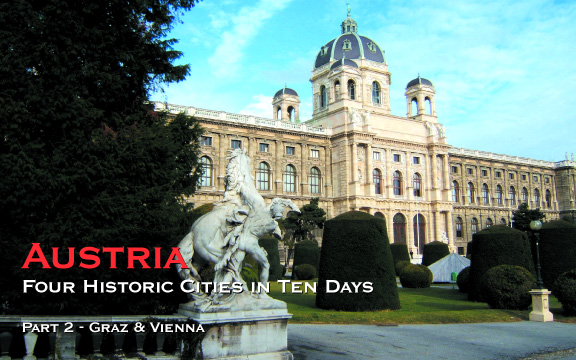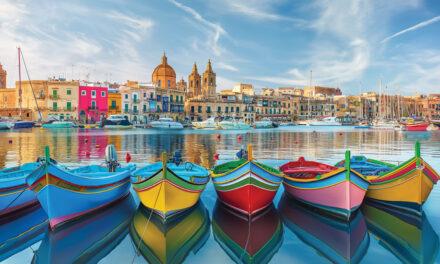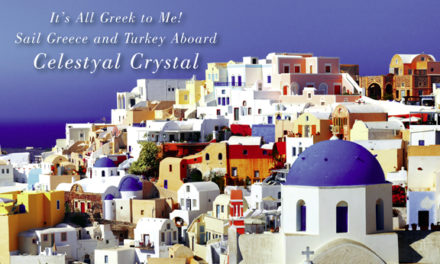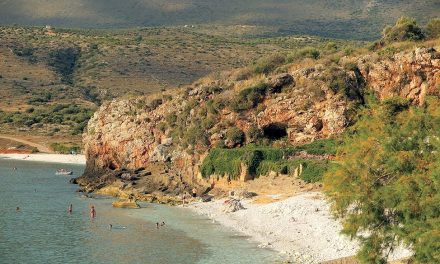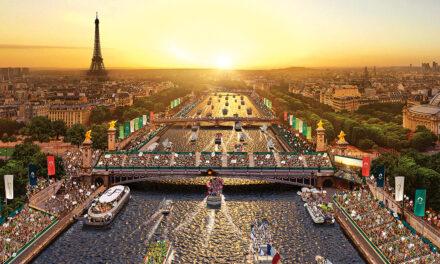Austria: Four Historic Cities in Ten Days
Part 2 – Graz & Vienna
Published in the Spring 2007 Issue of Canadian World Traveller
By Natalie Ayotte and Michael Morcos
Photos: Michael Morcos & The Austrian Tourist Office
Our exciting four-city tour of Austria began at Toronto’s Pearson International Airport where we boarded an Austrian Airlines jet for our direct flight to Vienna.
In Part 1 of our article, published in the Winter 2006-07 issue of Canadian World Traveller, we visited the cities of Linz in Upper Austria and Salzburg in Salzburger Land. We now conclude with our stay in Graz in the Region of Styria and our final stop in historic, elegant Vienna, Austria’s capital city.
 Graz: Capital of Styria
Graz: Capital of Styria
The longest train ride of our trip would now take us from the north to the south of the country. Our first-class Rail Europe pass again afforded us comfortable seats and spectacular views of the Austrian countryside and the magnificent Alps. We used the four-hour train ride to read up about our next speedily approaching destination.
A Milder Climate
Situated in the south of the country, the City of Graz enjoys a fairly mild climate, sharing its weather patterns with those of the Mediterranean ports of Italy and Slovenia.
We found our way to the well-appointed Hotel Weitzer, which was conveniently located in the heart of town, just beside the River Mur. After checking in, we went out to explore this beautiful city, which was chosen as a European Capital of Culture in 2003.

Napoleon’s Wrath
We made our way up to the top of the town to see the ruins of the fortress that was blown up by Napoleon’s army, not in the heat of battle, but after the town had surrendered.
Napoleon was so outraged that the fortress withstood days of cannon fire without any real damage that he ordered his men to dynamite it. The only thing left standing is the city’s famous landmark, the Graz Bell Tower.
The view from on top of the hill was breathtaking. The panoramic vista of the entire city of Graz included the picturesque red-clay-tiled rooftops of its historic buildings.
 A Unique Elevator Ride
A Unique Elevator Ride
We made our way up by the ultra-fast elevator built in 2003 during the city’s reign as a European Capital of Culture. The elevator went directly up through the centre of the mountain. On our way down we used the spiral staircase that led us down to the centre of the Altstadt, Graz’s charming and well-preserved historic old town.
Fascinating Courtyards
Graz is well known for its courtyards and we explored many outstanding examples. Interestingly, though they all seemed somewhat similar, each had its own character, style and personality depending on the type of businesses or residences that occupied the surrounding buildings.
This was evident when we visited a small restaurant specializing in Austrian cuisine. Its kitchen was actually located across the facing open courtyard!

A Call to Arms
Our second and final day in Graz was packed with activities, as we wanted to do as much as possible during our short visit.
We started at the Landeszeughaus, which is an old armoury that boasts the largest collection of weapons of that time. Included in its collection are well-preserved guns, knights’ suits of armour and swords.
A Friendly Alien
Our next stop was the Kunsthaus Museum known as the “friendly alien”. This ultramodern structure was also built when Graz was a European Capital of Culture in 2003 and is one of the most visited attractions in the city. The most striking thing about the museum is that the building itself stands out from all of the surrounding historic structures. It looked like a huge 3-D heart to me!
The exhibitions at the Kunsthaus are changed every three months. The museum also hosts gala parties. That day, we witnessed a wedding reception as we lunched at the museum’s trendy restaurant.
 Eggenberg Castle
Eggenberg Castle
From there, we went to an outlying district to visit Schloss Eggenberg, the historic castle that is now a museum open to the public. We viewed two very different art collections.
The first consisted of religious art and was grouped by themes instead of by era, artist or style. For example, all of the works of art featuring the images of the Virgin Mary were exhibited together in the same gallery.
The other collection was composed of black and white etchings from the Dutch master Rembrandt. The museum had an incredible 84 of them, very impressive for a small museum in a small town.
A Night at the Opera
As if visits to three museums on the same day were not enough, that evening we attended a concert at the Graz Opera House. We made our way there dressed to the nines (tie and all) to see Verdi’s Traviata. We weren’t sure what to except, but we were sure that there would be a tragedy involved and we were not disappointed.
We were a bit lost, as the opera was sung in Italian (I believe it was Italian) and the modern digital translating display in German wasn’t much help. However, it was a memorable evening to have shared with the local culture enthusiasts of Graz in this beautiful historic venue.
Farewell to Graz
The next day found us making our way in a full circle back to Vienna. The time was passing quickly and sadly we were down to our last two nights of our memorable grand tour of Austria.

Vienna: The Heart of Austria
Vienna was and is the heart of Austria. It is the seat of the present government and of past royalty and at one time, it was the centre of the then extensive and powerful Austrian-Hungarian Empire.
We started our visit by making our way to the Altstadt Hotel in Central Vienna. The rooms were newly renovated and we were lucky enough to get a Matteo Thun-designed room.
It was stunningly decorated with hardwood floors, black-marble washroom, high ceilings and wall-to-wall windows. It was almost a shame that we had to go out.
The Museums of Maria-Theresa Platz
Our first excursion was to the Natural History and the Art History Museums, which faced each other on Maria-Theresa Platz. The square features a bigger-than-life statue of the former Austrian Empress. These museums are very large and require time to explore.
 Café Landtmann
Café Landtmann
After our fascinating tours of the museums, we stopped for coffee at the landmark Café Landtmann. This well-known café was once a favourite haunt of Sigmund Freud. Here, we indulged in great Cappuccinos and tortes.
St-Stephen’s Cathedral
Our next strolled to St-Stephen’s Cathedral to see this remarkable building. The 450-foot tower was mesmerizing with lots of detailed ornamentation all the way up to its apex.
After visiting this famous Viennese landmark, we hurried back to our hotel and got ready for yet another concert.

Schönbrunn Palace
The concert was held at the Schönbrunn Palace, which is a UNESCO World Heritage Site and Vienna’s most visited building.
This enchanting evening, filled with classical music, ballet and opera, turned out to be yet another one of those perfect occasions on our short Austria vacation. Our only problem was that we couldn’t decide which half was better, the Mozart opening segment or the Schubert finale.
A Viennese Tram Ride
Our last day in Vienna was to be jam-packed with activities. We started with a ride on Tram #1, which circles the ring road around the city. This gave us a good orientation of the extensive city centre.
 Hofburg Palace
Hofburg Palace
Our first stop was the Hofburg Palace Complex where we visited the Spanish Riding School Museum and building, but unfortunately were not able to see the stallions themselves in action.
We walked around this immensely large complex and stopped at the Sisi Museum, the living quarters of Sisi and her husband King Franz-Josef and the royal apartments. Of course, we had to make a few purchases at the Sisi souvenir shop.
Out and About in Vienna
After a short visit to historic St-Augustine Church, which traditionally was used for royal marriages, we stopped of at the legendary Demel Café for espresso and cake while watching its bakers make a large assortment of torts, cookies and other Viennese delights.
 This is a very popular Viennese spot with locals and tourists alike and is known for its delectable selection of cakes and sweets.
This is a very popular Viennese spot with locals and tourists alike and is known for its delectable selection of cakes and sweets.
Our remaining time was spent buying last minute gifts on the shopping street of Karntnerstrasse, where one can buy everything from fine jewellery to designer clothes, eat at fine restaurants, and buy tons of authentic Austrian souvenirs.
At Journey’s End
Our stay in Vienna was much too short, as was our stay in Austria. I guess this is the sign of a really good trip! We will have to come back to see what we missed and to indulge once again in the beautiful things that made our whirlwind visit so memorable!

For More Info on Austria
Contact: The Austrian Tourist Office
Tel.: 416-967-3381
Email: travel@austria.info
Website: www.austria.info
If you plan to visit Graz or Vienna:
City of Graz (www.visitgraz.com)
Weitzer Hotel (www.weitzer.com/en)
Vienna Tourist Office (www.info.wien.at)
Altstadt Hotel (www.altstadt.at)
Getting There & Getting Around:
Austrian Airlines (www.austrian.com)
Rail Europe (www.raileurope.ca)

